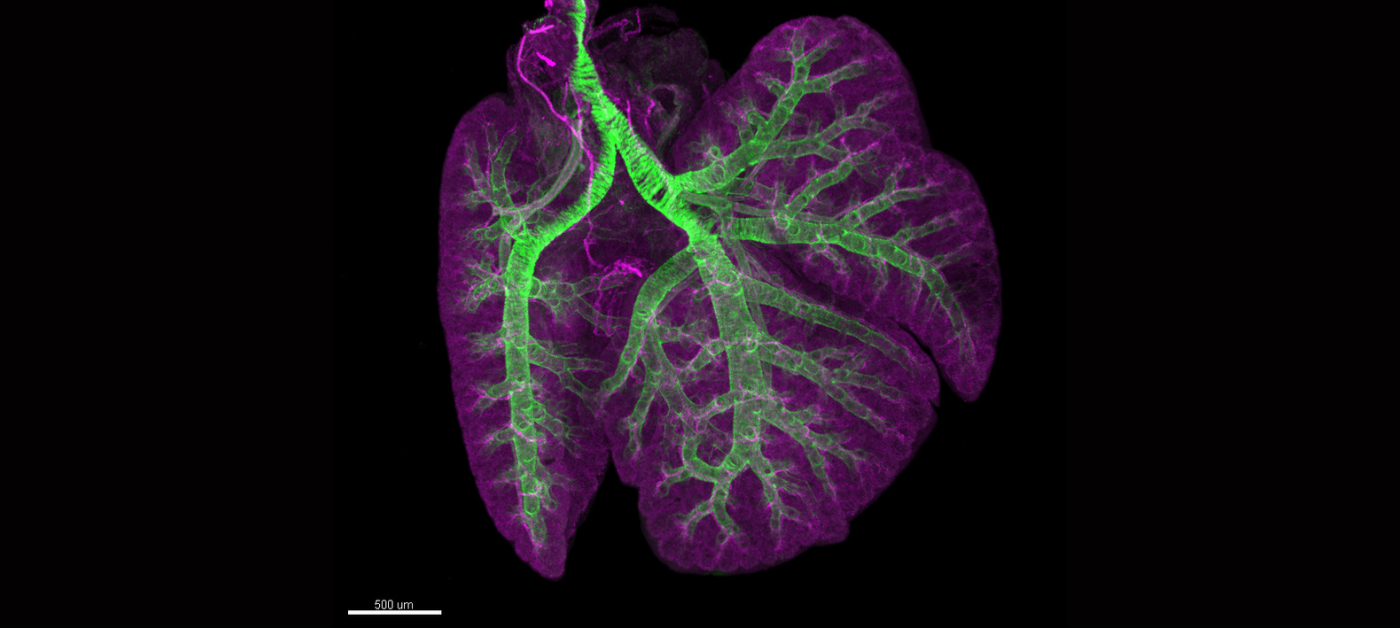MSU Researcher Awarded National Grant to Study Rare Childhood Lung Disease
June 12, 2025
Scientific research is a long game. You never know how a discovery made in a lab a decade ago may contribute to treatment for an as yet undiscovered deadly disease in the future. Ripla Arora, PhD, is experiencing this now. She just received the Pulmonary Hypertension Association (PHA) Pediatric PH Research Award to expand on research she started over ten years ago while studying embryology.
 Arora is a developmental geneticist and associate professor at MSU College of Human Medicine’s Department of Obstetrics, Gynecology, and Reproductive Biology and the Institute for Quantitative Health Science and Engineering. Her background includes expertise in structure-based mechanisms that facilitate embryo implantation and early pregnancy success, the study of T-box transcription factors in early fetal development, and the invention of a novel 3D-imaging and organ structure analysis method.
Arora is a developmental geneticist and associate professor at MSU College of Human Medicine’s Department of Obstetrics, Gynecology, and Reproductive Biology and the Institute for Quantitative Health Science and Engineering. Her background includes expertise in structure-based mechanisms that facilitate embryo implantation and early pregnancy success, the study of T-box transcription factors in early fetal development, and the invention of a novel 3D-imaging and organ structure analysis method.
The $65K award from the PHA will enable Arora to delve deeper into the biology of TBX4 and TBX5 gene mutations that she first developed at Columbia University while earning her PhD. In the intervening years, it was discovered that human TBX4 syndrome occurs in humans when there is a lack of TBX4 protein present in a fetus, leading to underdeveloped lung structures. Sometimes this leads to death in infancy or early childhood, and other times it means lifelong reliance on oxygen and other lung interventions.
When Arora originally studied TBX4 and TBX5 deletions in laboratory models in the early 2010s, there were no known links between these mutations and any human lung conditions. TBX4 mutations were associated with Small Patella Syndrome that affects the kneecaps, pelvis and feet. However, it has now become evident that TBX4 is critical for lung development in humans and the information she discovered could be lifesaving for kids with the disease.
“I'm really grateful for her passion, commitment, and the time she devotes to helping drive our work forward,” says Anton Morkin, founder and CEO of the global non-profit organization TBX4Life and father of an affected child. “Right from the start, she was full of energy and enthusiasm for our mission and quickly got involved—especially in preclinical research, helping connect and align basic science projects across different groups in the U.S. and internationally.”
TBX4Life aims to improve quality of life for affected families and to accelerate and coordinate global TBX4 syndrome research. They connect scientists with families for shared understanding. Most recently, Arora helped host the organization’s first in-person scientific research conference in San Francisco in March 2025.
“You get to meet everybody and push forward more than just the research,” Arora shares. “I think one big thing about translational science is getting the geneticist, the pathologist, the clinician and the biologist all in the same room to brainstorm and say, ‘What do you need? How can I help you?”
The conference resulted in a research roadmap that will be published in the coming months. As Arora puts it, the roadmap helped answer the question, “What do we need to do now so that in five years we are thinking about therapy?”
Her research award from the PHA will help move that roadmap forward. The grant money will fund one year of lab work focused on how TBX4 and TBX5 proteins regulate smooth muscle formation in the fetal lung. The whole tissue 3D imaging she developed while doing postdoctoral work at the University of California, San Francisco will be used to get a closer look at lung structure deficiencies and how they contribute to poor lung function and pulmonary hypertension.

An image of a fetal lung labeled in 3 dimensions. Pink labels blood vessels and green labels muscle that wraps around the airways and vessels. These exemplify some experiments that will be performed in the proposed research.
The hope is that the results from this year of study will allow her to apply for a larger NIH grant to continue research on the topic. “The goal was to get some money to get it going,” Arora reports. “Because the majority of my labs and publications focus on uterine biology, these smaller awards are super helpful [to fund work on relatively rare diseases].”
In fact, she received the Jean P. Schultz Biomedical Research Endowment Fund, an award from the College of Human Medicine, back in 2022 and used it to gather the preliminary data needed to apply for the PHA Award.
While all of the research takes place, Arora keeps her connection to the TBX4 community strong through her involvement with TBX4Life beyond the walls of the recent conference. Founder and CEO Anton Morkin shares that Arora actively unites global scientists on the topic: “With her strong background, she took the lead on a working group focused on Cells/Organoids/Animal models, which eventually grew into what we now call the ‘Biology of TBX4’ group. Today, she co-leads that group, bringing together experts from around the world to push forward TBX4 research.”
Arora had no way of knowing all of this when she was studying models with TBX4 and TBX5 deletions more than a decade ago. She was diligently earning her PhD, honing her skills as a researcher and publishing findings that didn’t yet have therapeutic indications. It just goes to show how much laboratory work matters. Scientific research is a long game, indeed.
By: Kayla Crum, RN | Media contact: Emily Linnert

